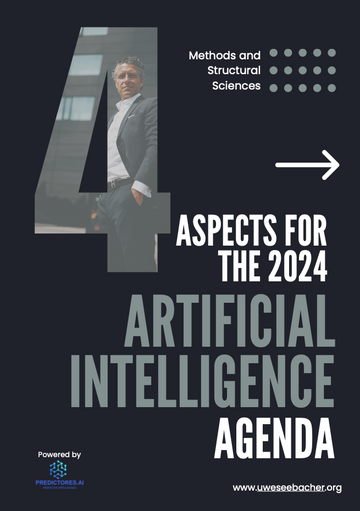Embracing the Emerald Deal: A Pathway to Authentic Environmental Reform
by Uwe Seebacher on Sep 13, 2023

Our world faces unprecedented environmental challenges, from climate change to resource depletion. Traditional Green Deals have been ambitious in goals yet often fall short in execution, lacking in robust mechanisms to ensure equitable and comprehensive change. Enter the Emerald Deal—a transformative approach that promises not only to address these environmental concerns but also to remedy the shortcomings of its predecessors. This new deal is rooted in evidence-based strategies, aiming for deeper, systemic change that encompasses social equity, economic stability, and environmental integrity. It stands as an audacious call to action for governments, industries, and individuals alike, poised to redefine our interaction with the planet.
The Shortcomings of the Green Deal
The traditional Green Deal, while a step forward, manifests critical limitations. Its emission reduction targets, though lofty, are often criticized for their lack of ambition and the inadequacy to match the urgency of the climate crisis. Additionally, there's an over-reliance on market mechanisms which, while spurring innovation, do not always account for the immediate environmental needs or lead to equitable outcomes. Social and equity considerations are underprioritized, often leaving marginalized communities behind. Furthermore, communication strategies have been ineffective, failing to create widespread awareness and engagement necessary to drive collective action. These shortcomings call for a more holistic and inclusive approach, as envisioned by the Emerald Deal.

What is the Emerald Deal?
The Emerald Deal represents an innovative paradigm in environmental policy, grounded in a robust, evidence-based approach. It's a comprehensive blueprint for societal transformation that prioritizes trust-building through authentic and transparent communication. This new deal calls for empathy in policy formation, ensuring that the voices and concerns of all societal sectors are heard and addressed. It's a commitment not just to sustainable practices but to the logical restructuring of societal norms and behaviors to achieve a balance between human progress and ecological stewardship. The Emerald Deal embodies the vision of a future where economic growth and environmental health are not mutually exclusive but are pursued with mutual reinforcement.

The Emerald Deal vs. The Green Deal
The Emerald Deal's communication strategy, inspired by Uwe Seebacher's insights in "Reengineering Corporate Communication," signifies a paradigm shift. It moves away from traditional one-to-one communication, embracing an All-2-All interaction model, vital in a FIBS world. This approach enables diverse, inclusive dialogues, building trust across societal sectors. By fostering clearer, more direct, and engaging communication, the Emerald Deal not only disseminates information but also cultivates a participatory environment. This is crucial in rallying support for ambitious environmental goals and ensuring widespread understanding and commitment to sustainable practices.
Building a Trusting Relationship with the Public
Building a trusting relationship with the public is essential for any policy, especially those concerning environmental sustainability. Effective public engagement strategies include open dialogues, interactive platforms, and community-based initiatives. Clear and authentic communication is key in building trust, as it ensures transparency and relatability. Policymakers must also integrate empathy into their strategies, acknowledging and addressing the diverse needs and concerns of different community segments. This empathetic approach ensures policies are not only effective but also resonate deeply with the public, fostering a sense of ownership and commitment to environmental goals.
The Role of Individuals and Communities
In the context of the Emerald Deal, individuals and communities play a pivotal role. Their active participation is crucial in achieving environmental goals. Community-led initiatives, particularly, serve as a cornerstone for this approach, demonstrating the power of local action in driving global change. These initiatives, grounded in local knowledge and needs, not only foster environmental sustainability but also strengthen community bonds and empower individuals. Their importance lies in their ability to implement practical, tailored solutions, making a significant impact on the broader objectives of the Emerald Deal.
Conclusion
In conclusion, the Emerald Deal marks a significant stride towards a sustainable future, addressing the limitations of traditional environmental policies. It emphasizes trust-building, community engagement, and a holistic approach to environmental challenges. By involving individuals and communities, the Emerald Deal not only aims for ecological balance but also fosters social equity and economic sustainability. This deal represents a hopeful path forward, where environmental goals are achieved through inclusive, empathetic, and effective strategies. If you want to read more on the Emerald Deal and how collective intelligence facilitates the transition from the Green to the Emerald Deal, you can find further information in the book "Collective Intelligence - The Rise of Swarm Systems and Their Impact on Society" (CRC Press Taylor Frances Group, Boca Raton).






